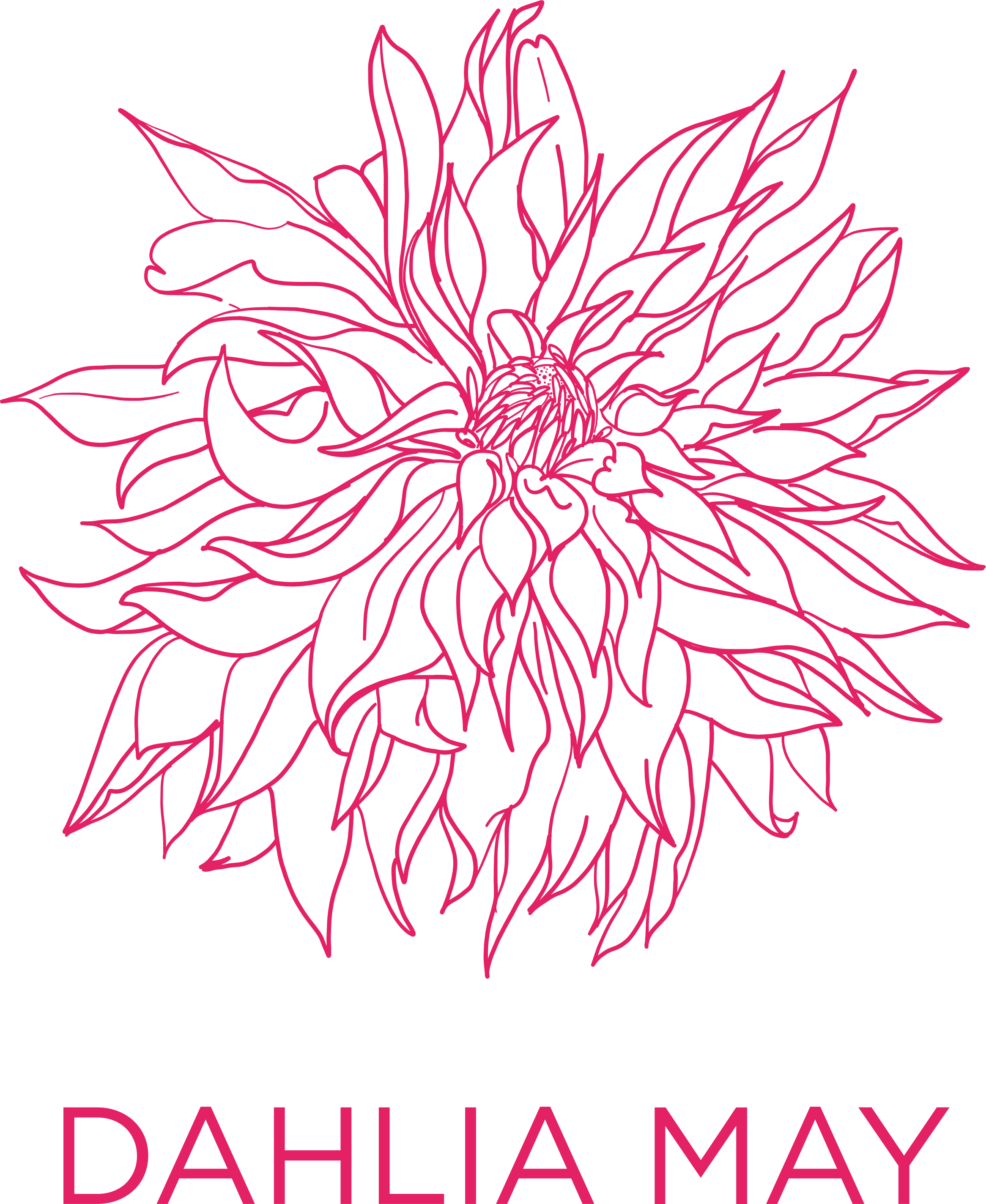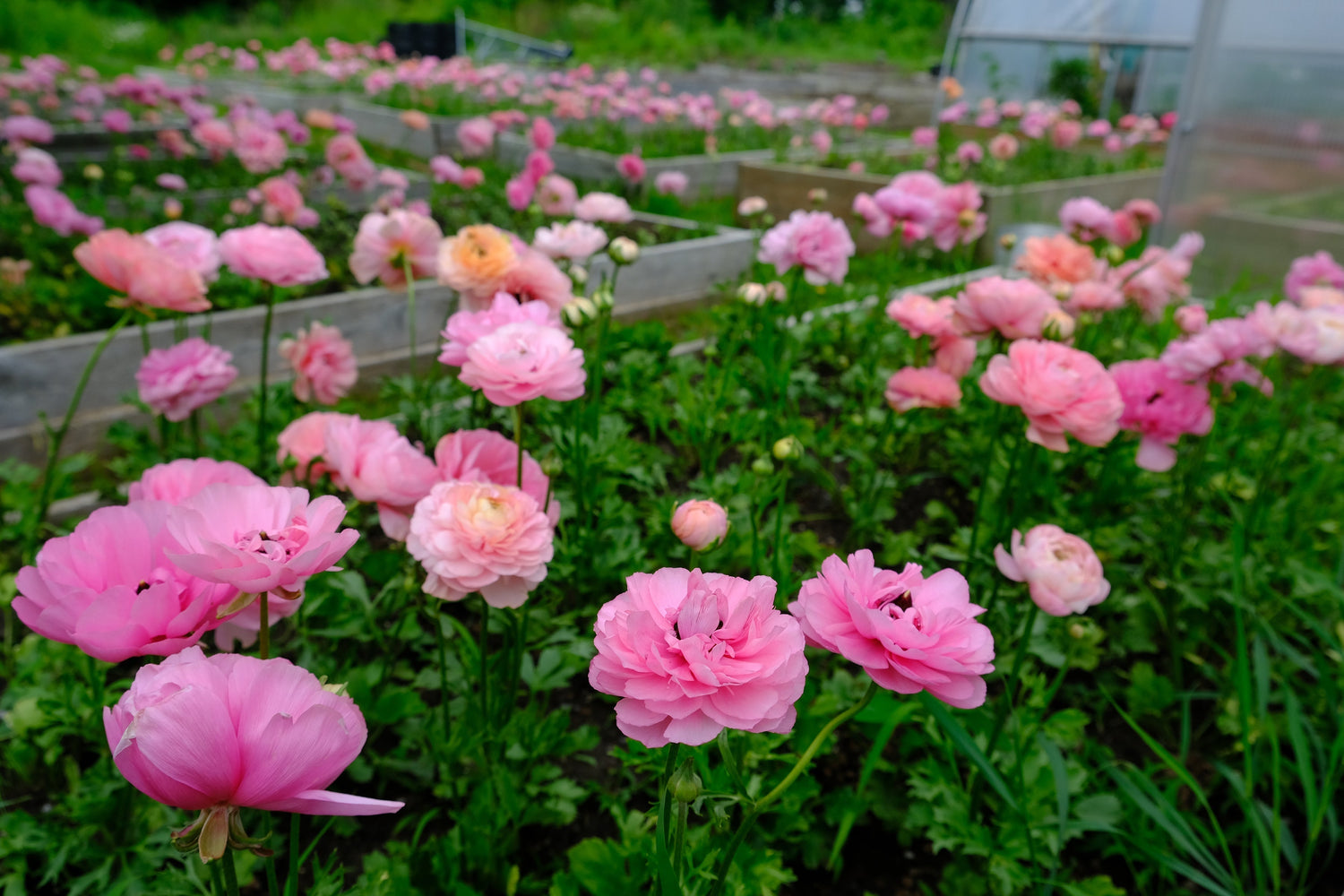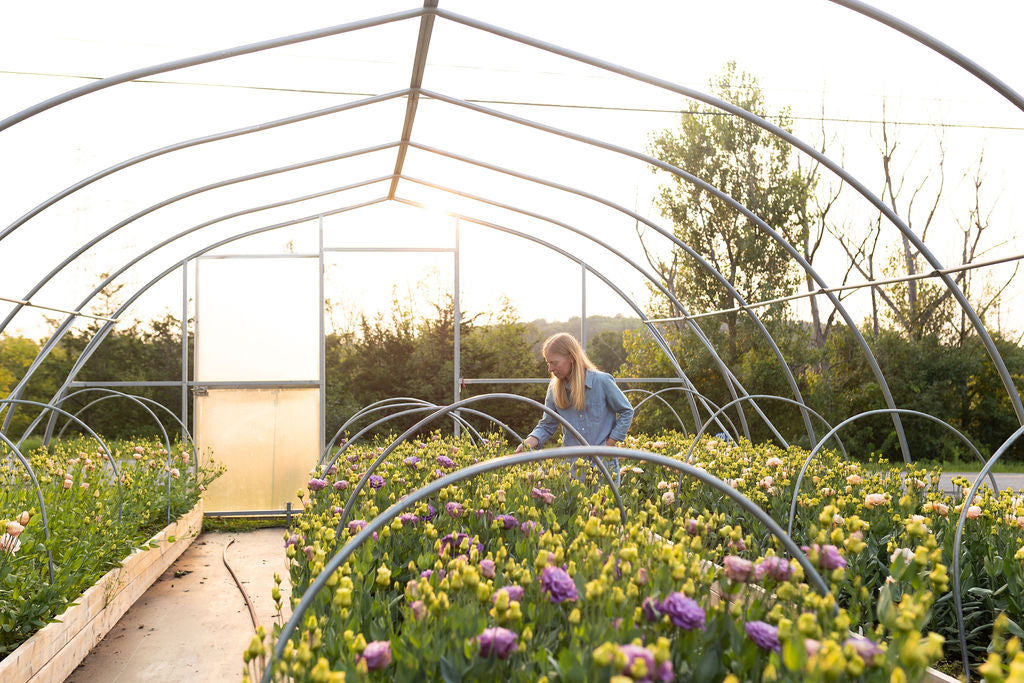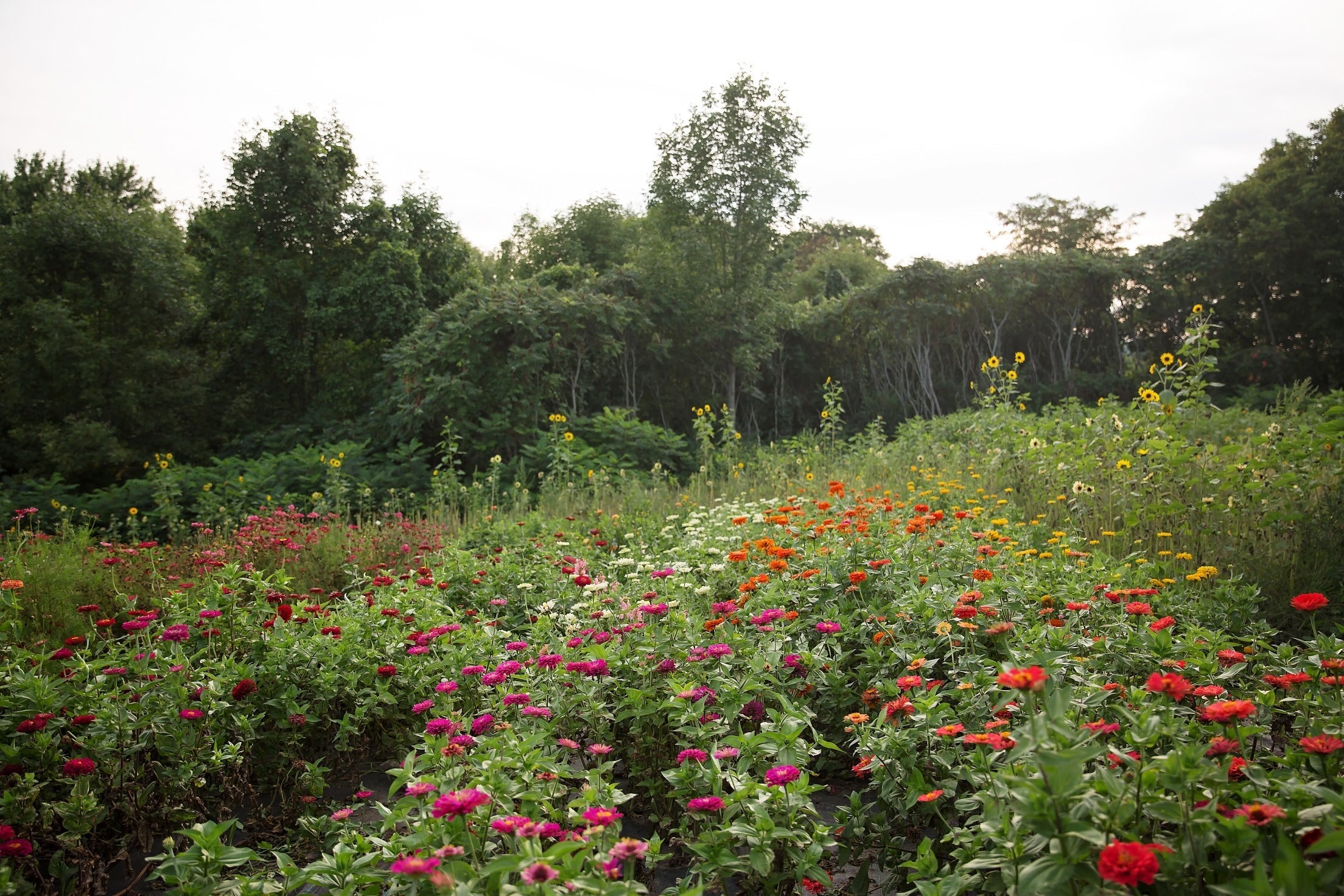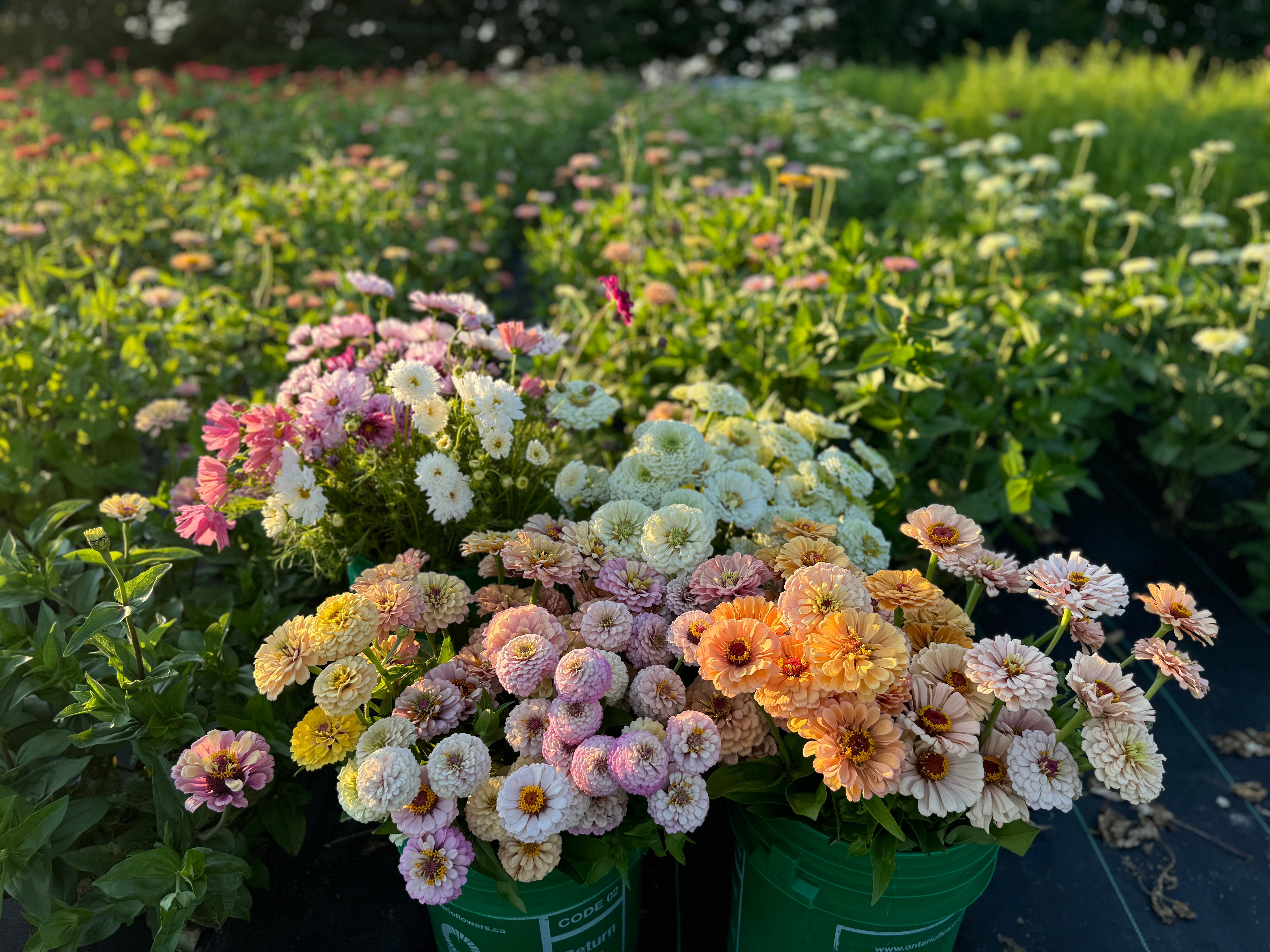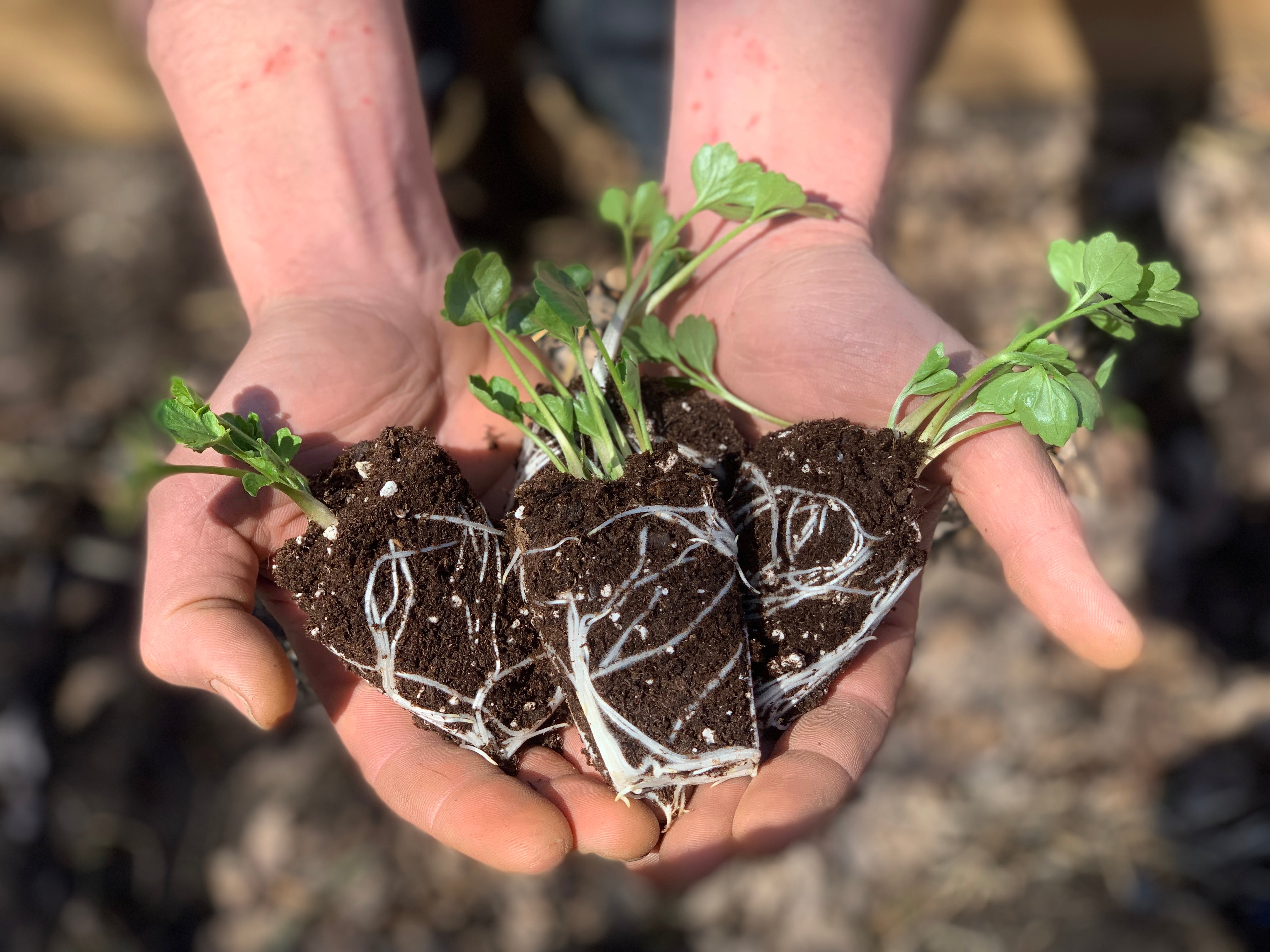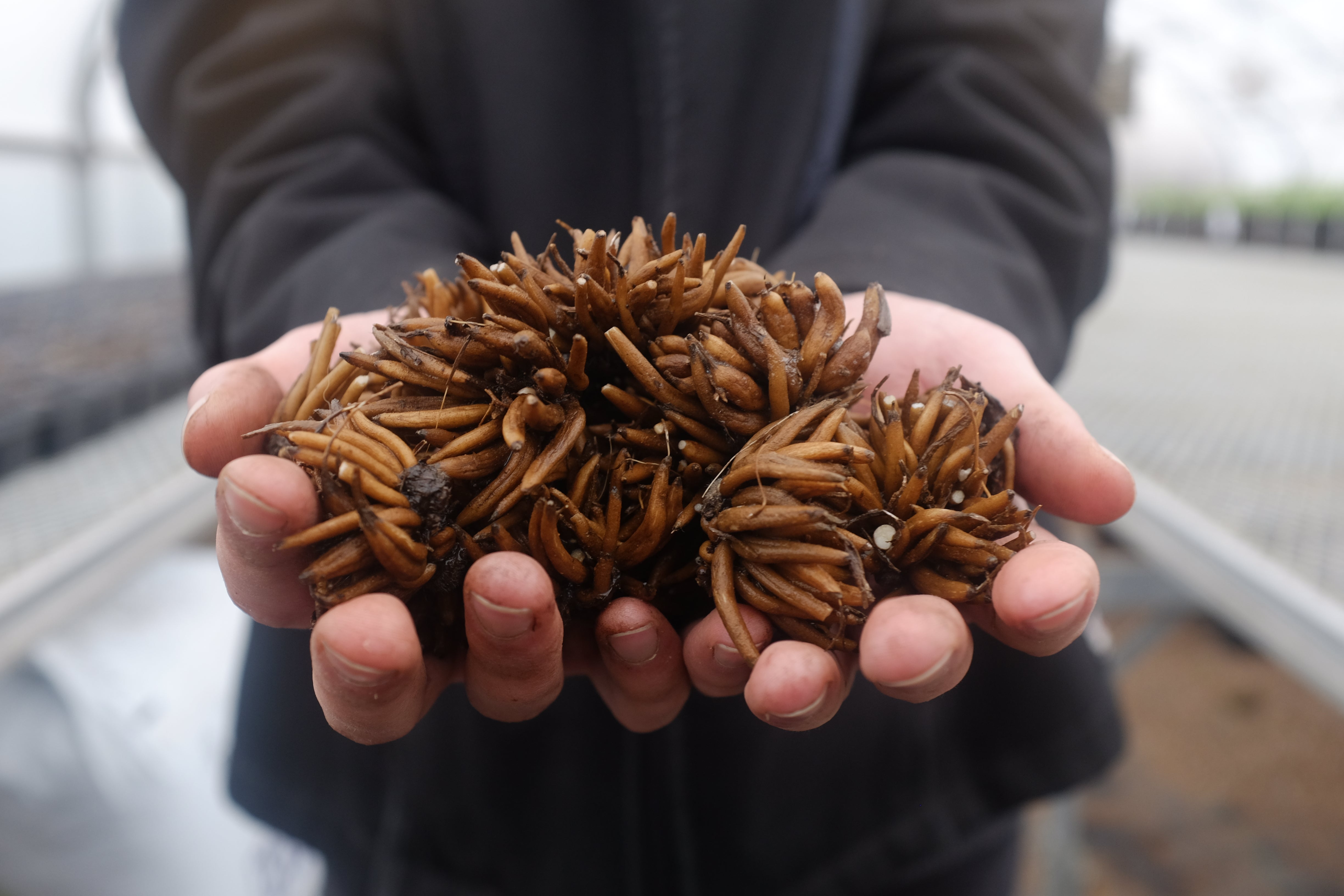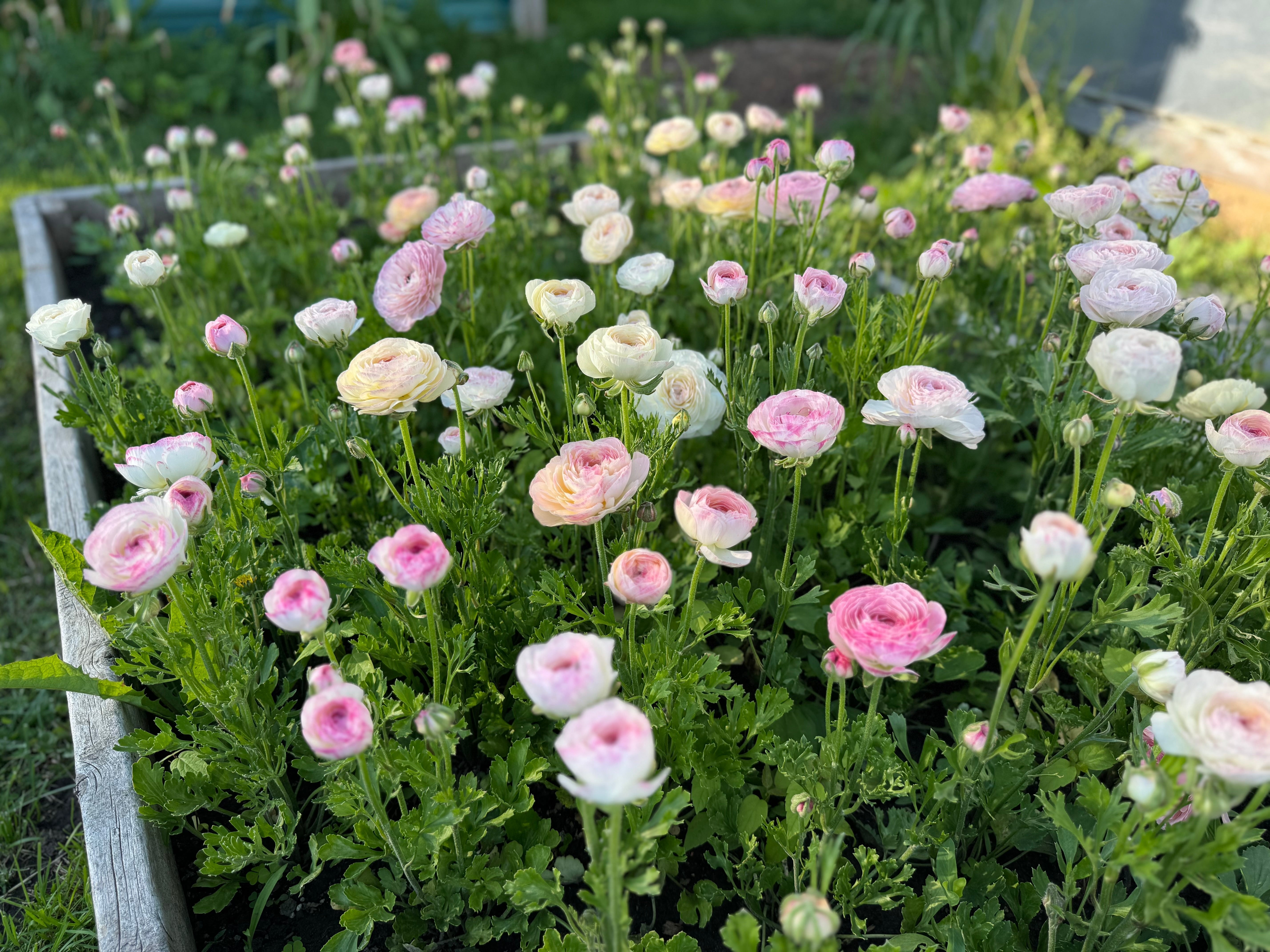It’s that time of year where we’re ALL thinking spring thoughts! And one of those spring thoughts might be trying your hand at growing your own Ranunculus and Anemones in your garden this year. These flowers are some of our most sought after cut flowers, and it’s so rewarding to have your own little catch of these beauties blooming in your own home garden! 
Lots of questions often arise when it comes time to plant Ranunculus and Anemones, and with good reason. They are not quite as simple to plant as say, a tulip, but, with proper instructions the process is fairly straightforward.
We send a full set of growing instructions out with every corm order, and we’ve created a full growing guide on our website, which you can find under our 'Growing Resources' tab.
Every spring we receive plenty of questions about the growing process, and in our next few blog posts we’ll try to answer as many of them as we can!
Read on below for our forth instalment of the Ranunculus and Anemone Q and A!
ADAPTING TO YOUR CLIMATE: HOW TO CONSIDER YOUR CLIMATE IN YOUR PLANTS NEEDS

Understanding your local climate and how it relates to ranunculus' needs is key.
Ranunculus are cool-season plants that prefer cooler spring and autumn temperatures. In very warm climates (think gardening zones 7/8 and up) providing some afternoon shade can help extend the flowering period and protect the plants from heat. This can be done by planting in pots that can be moved into the shade in the afternoon, or by applying a little bit of shade cloth over top of your garden beds to shield plants from harsh sun and heat.
Conversely, in cooler climates, maximizing sunlight exposure and protecting plants from late frosts by using frost cloth or covering plants with containers can be beneficial. Here in Zone 5 (and in colder zones) we find that planting our ranunculus in an area where they will receive full. Sun is best, as our springs can be quite cool.
Growing ranunculus in pots is an advantage in warmer climates. Specifically, it allows you to control the amount and timing of sun exposure. The longer you can protect your plants from the heat of the summer sun, the longer they will bloom.
As temperatures rise, prolong the life of your plants by shifting them to a spot with partial shade. If possible, give your ranunculus plenty of sunlight in the morning. The afternoon sun is hotter and harsher. Giving your plants shade in the afternoon will help to keep them cool and extend their season.
Temperature and sun exposure go hand in hand. Expect your plants to thrive and perform their best while the weather is cool and mild. The ideal temperatures for ranunculus are between 35°-50°F (2°-10°C) at night and 60°-75°F (16°-24°C) during the day.
These are cool-weather bloomers, so once the weather heats up, they will stop blooming. In cool weather, place your potted plants in full sun, giving them as many hours as possible. This will help them to produce the maximum number of blooms.
HOW MUCH WATER DO RANUNCULUS AND ANEMONES NEED?

How much water your plants will need depends on where they are located, and they’re growing and soil conditions.
Let’s start with first soaking your corns: once you have soaked your corms, you will want to plant them in moist (but not soaking wet) Potting soil. What is the difference between moist soil and soaking wet soil? To prepare your potting soil for planting, you will want to take your bag of dry potting soil, and slowly mix water into it. When you can grab a handful of your soil, and the soil, maintains the shape of your hand, as you release your fingers, without dripping water through your fingers, Your potting soil is moist. This is perfect for planting your soaked corms. If you take a handful of your potting soil and squeeze it and water pours out of your hands, your soil is soaking wet, and it’s too wet to be planting in. You want to add some dry potting soil into your mixture again to soak up some of this excess water. If your soil is too wet, you run the risk of your corns rotting. If your potting soil is not moist enough, it’s possible that your corns will not sprout as they won’t have enough moisture to do so.
Once you’ve planted your corms in your moist potting soil, and put them in a cool dark place to begin to sprout, check on them every 4 to 5 days, and water your trays if you find that the soil is beginning to look too dry.
What about once your plants have started to sprout? At the risk of sounding redundant, it is important to avoid overwatering your young plants. The corms are vulnerable to fungus and root rot at this stage. Until there is foliage to support your young plants, they won’t absorb much water, so they should be watered sparingly.
Once you’ve planted your ranunculus and anemones outside, watering frequency depends on a few factors. The climate plays a role in how often your plants need water. In warmer weather, you will need to water them more often. In cooler weather, you want to water less often, to avoid risking any rotting. The container size is another contributing factor. A larger pot will not dry out as quickly as a smaller one.
Aim for a balance, watering deeply enough to reach the roots but allowing the soil to dry slightly between waterings. We always recommend watering deeply, and then leaving your plants for several days to dry out again, versus adding just a little bit of water each day. This mimics the natural precipitation patterns ranunculus would experience in their native habitats (think about receiving a deep spring rain, followed by several days of sunshine to let the plants soak in that rain).
One tool that we have found very helpful in the growing process, especially when we were just getting to learn about plants, is to use a moisture metre.
This is an item that you can find at your local hardware store, or online. It has a long spike that you are able to put Into your soil, and the spike is attached to a gauge that will read how moist or dry your soil is. This can be especially helpful because sometimes just looking at the surface of the soil can be deceiving. Soil may appear dry on top, but when you stick a moisture metre into your pots, you may realize that below the upper half inch of your soil, your pots are actually still quite moist and not needing water at all. Don’t be afraid to use a helpful tool like this in the growing process, especially when you’re just beginning. We still rely on our moisture metre here at the farm from time to time!
WHAT ROLE DOES TEMPERATURE PLAY IN THE PLANTS GROWTH AND BLOOMING PERIOD?

Ranunculus and Anemones are cool-weather bloomers, so once the weather heats up, they will stop blooming.
In cool weather, place your potted plants in full sun, giving them as many hours as possible. This will help them to produce the maximum number of blooms.
As temperatures rise, prolong the life of your plants by shifting them to a spot with partial shade. If possible, give your ranunculus plenty of sunlight in the morning. The afternoon sun is hotter and harsher. Giving your plants shade in the afternoon will help to keep them cool and extend their season.
Temperature and sun exposure go hand in hand. Expect your plants to thrive and perform their best while the weather is cool and mild. The ideal temperatures for ranunculus are between 35°-50°F (2°-10°C) at night and 60°-75°F (16°-24°C) during the day.
